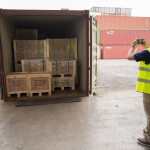24
Feb 2014
International Trade Priority In Canada
ECONOMIC SANCTIONS
Canada imposes economic sanctions against a number of countries pursuant to the Special Economic Measures Act and the United Nations Act. In Budget 2014, the federal government has acknowledged that the due diligence requirements under Canada’s economic sanctions place a significant burden on the private sector. For example, existing sanctions strictly regulate interactions with designated individuals and entities, whose names are contained in 19 separate lists located on five different domestic and international websites. The federal government has committed in Budget 2014 to adopting new administrative measures and, where necessary, enacting legislative and regulatory amendments to improve the effectiveness of Canada’s sanctions regime.
TRADE AND INVESTMENT AGREEMENTS
In Budget 2014, the federal government committed to continuing the work it had done in 2013 towards advancing its international trade relationships. In addition to the agreement in principle on the Comprehensive Economic and Trade Agreement with the European Union that was announced in October, the Canada-Panama Free Trade Agreement came into force in April, while an expanded Canada-Chile Free Trade Agreement came into force in September, and the Canada-Honduras Free Trade Agreement was signed in November. 2014 may see the signing of a number of new free trade agreements, as Canada conducted several rounds of negotiations with India and Japan this past year, while also participating in negotiations towards the Trans-Pacific Partnership.
Foreign investment promotion and protection agreements have also kept the federal government busy in 2013 with the Canada-Tanzania agreement coming into force and negotiations being completed on seven additional agreements. In November negotiations began on a foreign investment promotion and protection agreement between Canada and Macedonia, which is expected to be completed in 2014.
CUSTOMS DUTIES RELIEF MEASURES
In an effort to increase the global competitiveness of Canadian energy projects, the federal government has announced in Budget 2014 that it will permanently eliminate the 20 per cent tariff on mobile offshore drilling units that are used in the exploration and development of offshore oil and gas. A remission order to suspend tariffs on mobile offshore drilling units was granted in 2004, but was set to expire on May 4, 2014. The permanent elimination of tariffs on the drilling units is expected to reduce the business costs of offshore exploration and development by C$13 million annually.
Other duties relief measures were also covered by Budget 2014. In particular, a tariff relief pilot project implemented by Economic Action Plan 2013 saw the elimination of tariffs on baby clothing, and certain sports and athletic goods such as ice skates, skis and golf clubs. The project was part of an effort to determine the best way to reduce the price gap between identical goods sold in Canada and the U.S. In Budget 2014, the federal government confirmed that it is monitoring the tariff savings resulting from this program in order to see whether they translate into lower retail prices for consumers, with a final assessment expected by the end of 2014.
BEYOND THE BORDER AND REGULATORY COOPERATION
Canada and the U.S. entered into the Beyond the Border Action Plan (BBAP) in February 2011 in an attempt to develop a coordinated approach to border security that would not hinder cross-border trade in goods and services worth over C$700 billion annually. According to Budget 2014, 2013 saw the following key accomplishments under the BBAP:
- an increase in enrolment in the NEXUS trusted traveller program;
- the implementation of Phase I of the truck cargo pre-inspection pilot at Pacific Highway, British Columbia;
- an increase and harmonization of the threshold value for low-value commercial shipments to C$2,500 for expedited customs clearance;
- the launch of Phase II of the joint Entry/Exit program at the common land border, making the record of entry into one country the record of exit from the other country for individuals who are not citizens of either Canada or the U.S.;
- the release of the first joint Border Infrastructure Investment Plan, intended to outline the approach Canada and the U.S. will take to coordinate physical infrastructure upgrades at small and remote ports of entry.
More information on SBE International
Source from www.mondaq.com/































